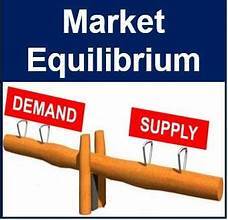
Housing Market Correction Reveals Fundamental Imbalances
The housing market flipped overnight. Buyers who once fought bidding wars now hold all the leverage.
This reversal stems from a simple but devastating chain reaction. COVID-era interest rates below 3% created artificial demand that inflated home prices beyond sustainable levels.
The mechanics were predictable. Ultra-low rates drove buyers into frenzied competition over limited inventory. Bidding wars became the norm. Prices soared past fundamental value.
Now the pendulum swings hard in the opposite direction.
The Geographic Concentration Tells the Story
Texas and Florida reveal how dramatically this correction concentrates in specific regions. These states attracted massive pandemic migration as remote work freed buyers from geographic constraints.
Builders responded by overbuilding. The return-to-office mandate reversed migration flows, leaving oversupply in markets that seemed unstoppable just months earlier.
The numbers are staggering. Miami now has three times more sellers than buyers, making it the most unbalanced metro in the nation. Austin follows with 124% more sellers than buyers, while home prices have fallen over 3% since last year.
West Palm Beach, Fort Lauderdale, Tampa, and Jacksonville all show severe buyer's market conditions. Houston, Dallas, Fort Worth, and San Antonio have joined the list.
This geographic pattern distinguishes the current correction from 2008. Rather than systemic financial collapse, today's imbalances reflect specific regional overbuilding and demographic shifts.
Multifamily Markets Face Deeper Stress
The apartment and condo segments show the most severe distress. Nationwide, there are 83% more condo sellers than buyers compared to just 28% more sellers in single-family homes.
Multiple pressures compound the problem. Rising HOA fees and soaring insurance premiums, particularly in Florida, push condo owners toward exits. Developers face financing difficulties while construction costs continue to climb.
Vacancy rates climb as new construction projects slow. The migration reversal hits multifamily properties hardest since many pandemic buyers initially chose apartments before moving to single-family homes.
This segment's struggles signal broader preference shifts. Buyers increasingly favor single-family homes over condos, accelerating the multifamily correction.
Builder Innovation Under Pressure
Production builders adapt through creative financing rather than traditional sales models. LGI Homes now offers lease-to-buy programs, allowing customers to occupy homes while working toward purchase qualification.
These innovations represent survival strategies rather than confidence in traditional sales returning soon. When established builders fundamentally alter their business models, it signals expectations of prolonged market stress.
Price cuts and incentives have become standard. Nearly 40% of builders reduced prices in June, while 62% offer sales incentives to attract reluctant buyers.
The shift from buyers competing against each other to builders competing for buyers marks a complete market reversal. This dynamic suggests the correction will persist until the supply-demand balance returns.
The Timeline Reality
Market rebalancing requires time to absorb excess inventory. Without significant mortgage rate drops of 1% or more, current conditions will likely persist for three to five years.
Rate cuts of that magnitude remain unlikely given inflation concerns and Federal Reserve policy. This locks the market into an extended correction period.
The timeline distinguishes this correction from typical market cycles. Rather than quick adjustments, structural imbalances require prolonged rebalancing as demographics and economic fundamentals realign.
Thirty-one of the 50 largest metros now favor buyers, with sellers outnumbering buyers by 34% nationally. This represents the largest gap in over a decade.
The Fundamental Problem
Creative financing solutions mask rather than solve the underlying affordability crisis. Price-to-income ratios remain fundamentally disconnected from historical norms.
Rent-to-own programs and builder incentives provide temporary relief but cannot address structural affordability gaps. Until prices align with income levels, these measures simply delay inevitable adjustments.
The correction serves a necessary function. Market forces work to restore balance between home prices and buyer purchasing power.
This process differs fundamentally from 2008's financial system collapse. Current adjustments reflect supply-demand rebalancing rather than credit market failure.
The housing market correction reveals deeper economic imbalances created by artificial rate policies. Geographic concentration in Texas and Florida, multifamily stress, and builder model changes all point toward extended rebalancing.
Understanding this correction as a structural adjustment rather than a crisis provides a clearer perspective on both timeline and outcomes. The market seeks equilibrium between prices and fundamental economic conditions.
